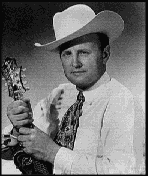|
 WELCOME TO THE WEIRD and wonderful world of the mandolin. This self study course is intended to get you started on the mandolin, and give you an introduction to Scottish music and other musics of the world on the way. At times you will get frustrated at your seeming lack of progress, but unless you are completely tone deaf and inept you'll end up surprising yourself. WELCOME TO THE WEIRD and wonderful world of the mandolin. This self study course is intended to get you started on the mandolin, and give you an introduction to Scottish music and other musics of the world on the way. At times you will get frustrated at your seeming lack of progress, but unless you are completely tone deaf and inept you'll end up surprising yourself.
At first we will be learning how to tune the instrument, how to use the plectrum, how to use our left and right hands, and various specialist techniques. In addition we'll be looking at the various forms of Scottish music and learning our first tunes.
Once you have the basics, we will extend our knowledge o technique and also look at various types of music from Irish and American (Bluegrass, Old-time, Blues and Jazz), to classical and beyond. The tunes will be given in staff notation and tablature, and soundfiles containing the musical examples will be available.
The emphasis is on FUN, but that's not to say it won't be hard work; but it will be worth it.
The Mandolin - A Brief History
 The Mandolin is a stringed instrument of Italian origin derived
from the lute. It has four pairs of steel strings tuned like a violin
(G D A E) and is played with a plectrum. Beethoven, Mozart, Vivaldi, and Stravinsky have all written music for the mandolin. An increase in Italian immigration into the U.S. in the 1880s sparked a fad for the bowl-backed Neopolitan instrument; the mandolin was even among the first recorded instruments on Edison cylinders. The Mandolin is a stringed instrument of Italian origin derived
from the lute. It has four pairs of steel strings tuned like a violin
(G D A E) and is played with a plectrum. Beethoven, Mozart, Vivaldi, and Stravinsky have all written music for the mandolin. An increase in Italian immigration into the U.S. in the 1880s sparked a fad for the bowl-backed Neopolitan instrument; the mandolin was even among the first recorded instruments on Edison cylinders.
Around 1900 mandolin orchestras came into vogue, with families of mandolins ranging from soprano to bass. American folk music also adopted the mandolin at this time; a flat-backed version is played in bluegrass bands.
From the turn of the century through the 1940s, a handful of American virtuoso mandolinists, mostly immigrants, performed, recorded, composed, and arranged for the mandolin. By this time banjo, mandolin, and guitar clubs had become the rage among middle-class youth on college campuses and in towns and cities throughout the South.
The Modern Flat-Back Mandolin
The 1905 Gibson A-4 was a revolutionary instrument in its time, breaking radically away from the traditional mandolin: instead of having a flat or bent top and a bowlback, the new design was based on principles of violin construction, using a carved top and back. Though it has been modified several times since, this design set the standard for what was to become the preferred style of mandolin used in both U.S. and British folk and pop music.
 The Influence of Bill Monroe
The Influence of Bill Monroe
Like most of the other brother acts of the 30's, Bill Monroe and his guitarist brother Charlie sang sacred and sentimental songs in beautiful two-part harmonies. In contrast to the sweet, relaxed tremolo style of mandolin playing so common in the other brother duets, Bill played fiery cascades of rapid-fire notes that brought a power and urgency to the music that simply had not been there before.
Monroe's mandolin playing was getting to a lot of people via the radio, people who didn't know the mandolin was being used that way. People responded to the raw emotion of his playing, and the Monroe Brothers became one of the more popular brother acts of the era. Monroe later went on to create the bluegrass style (named after Monroe's band, The Bluegrass Boys), which put the mandolin securely at centre stage.
The Mandolin Today
Today the mandolin continues to be a popular and vital instrument. In country music, the mandolin has made quite a comeback since the heyday of the Nashville Sound in the 60's and 70's. English folk-rock, the acoustic-tinged albums of Rod Stewart, and the heady acoustic ballads of Led Zepplin all made the mandolin a familiar sound to rock audiences. Today, the present interest in 'unplugged' music continues to showcase the mandolin. There has even been somewhat of a resurgence of interest in classical mandolin. Many young artists are recording albums of classical mandolin music, and recently in New York City, a mandolin orchestra held its 70th annual Spring concert.
And of course the vibrant, organic folk musics of Ireland, Scotland, England, and the American South continue unabated. Bluegrass music, while far out of the mainstream, continues to attract young players who keep the music alive and growing. And as long as there is Bluegrass, there will be a place for the mandolin.
The Scottish Mandolin
The mandolin is not immediately associated with Scottish music, but there have been some notable players. The Easy Club, Ossian, The Boys of the Lough and The Battlefield Band have all used the mandolin in their line-ups.
|